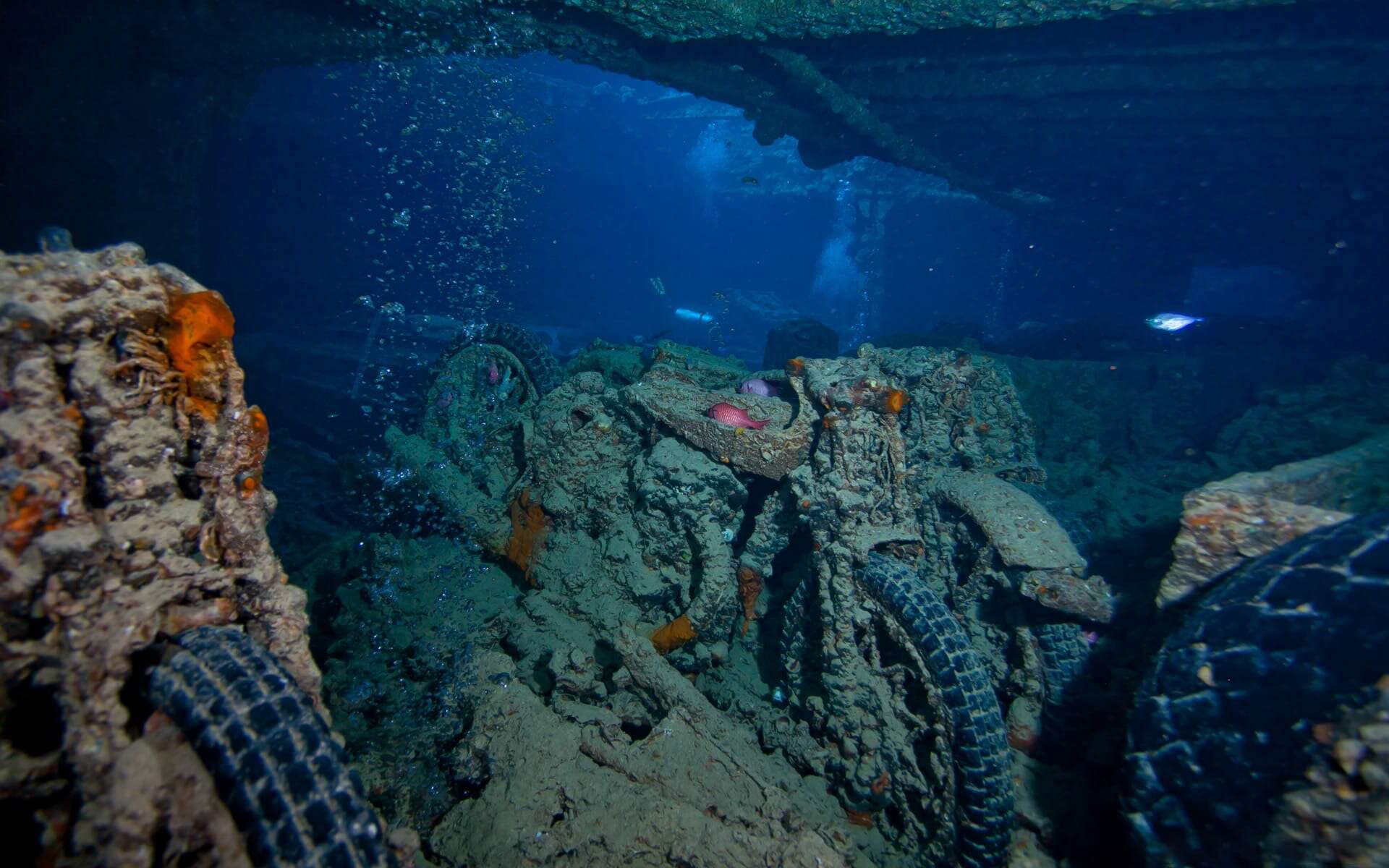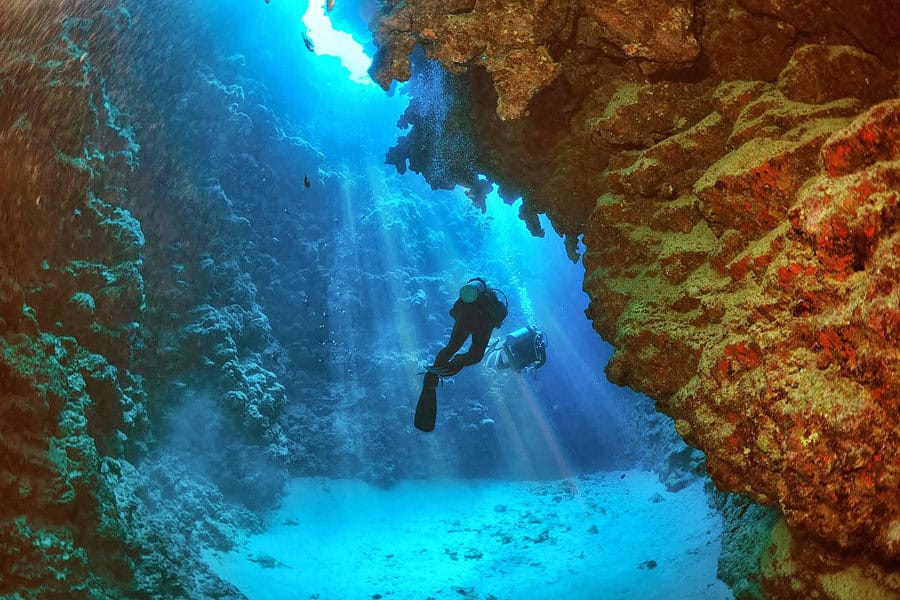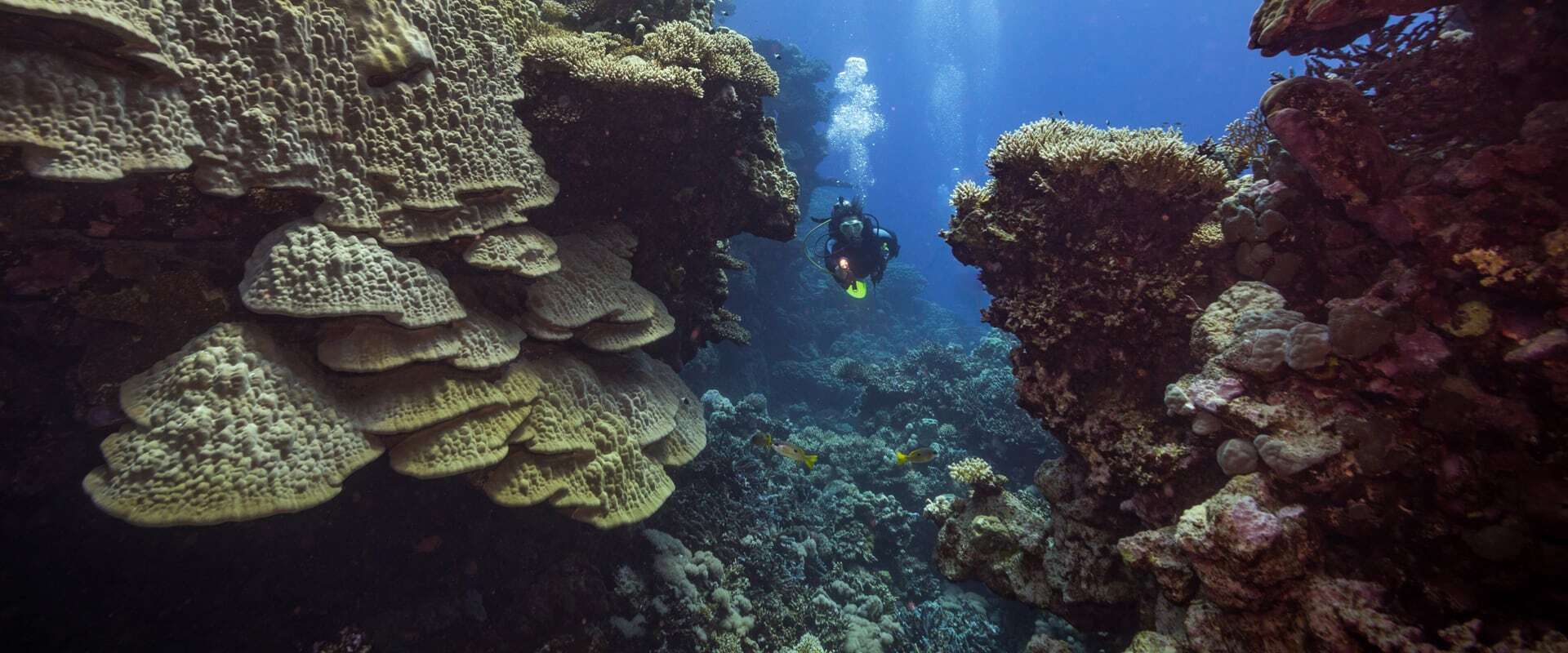Egypt, famous for its ancient wonders and rich history, is also home to some of the world’s most stunning diving destinations. With its crystal-clear waters, thriving coral reefs, and diverse marine life, the Red Sea has become a top choice for divers of all levels. Whether looking for colorful coral gardens, thrilling wreck dives, or encounters with majestic creatures like sharks and dolphins, Egypt offers a unique underwater experience. From the bustling dive hubs of Sharm el-Sheikh to the tranquil, unspoiled depths of Dahab, Egypt provides an array of diving adventures to suit every type of diver. In this guide, we’ll take you through some of the best diving destinations in Egypt, each offering its breathtaking underwater world. With favorable year-round conditions, Egypt is truly a diver’s paradise waiting to be explored.
Sharm el-Sheikh: Shark and Yolanda Reefs
Located at the southern tip of the Sinai Peninsula within the Ras Mohammed National Park, Shark and Yolanda Reefs are some of Egypt’s most celebrated dive sites. These twin reefs are known for their intense currents, which make them ideal for advanced drift diving. They sweep divers through a scenic underwater landscape of coral, fish, and remnants of a shipwreck.
- Key Features: Shark Reef is known for its sheer vertical wall that plunges deep into the blue, adorned with soft corals and teeming with fish, including barracuda, snappers, and sometimes hammerhead sharks. Yolanda Reef offers an unusual twist as it’s scattered with the remains of a Cypriot cargo ship, the MV Yolanda, which sunk here in 1980. The reef has bathtubs, toilets, and other cargo items, creating a surreal diving experience.
- Marine Life: Shark and Yolanda Reefs are home to various marine species. Expect to see tuna, reef sharks, and a vibrant array of coral species. Large schools of fish, like trevallies and jackfish, are also common.
- Diving Tips: Due to the currents, these reefs are best suited for experienced divers. For divers seeking to avoid the crowds, visiting during the off-peak season, such as winter, can offer a more tranquil experience.
SS Thistlegorm Wreck

The SS Thistlegorm, a British armed freighter, was sunk in 1941 by German bombers and is now one of the world’s most iconic wreck dives. Located off the coast of the Sinai Peninsula, this wreck is accessible via liveaboard trips from Sharm el-Sheikh. It is especially popular among advanced divers interested in history and wreck exploration.
- Key Features: The Thistlegorm contains WWII artifacts, including trucks, motorcycles, and military supplies. The wreck is remarkably well-preserved, and divers can navigate the cargo holds to explore the remnants of the ship’s historical load.
- Marine Life: Over the decades, the wreck has become an artificial reef that attracts a rich array of marine life, including barracudas, groupers, and lionfish. The wreck is particularly fascinating during night dives when the bioluminescent plankton lights up the surroundings.
- Diving Tips: This site is recommended for advanced divers due to its depth and strong currents. Visibility can vary depending on weather and season, so planning with a local operator can help ensure optimal diving conditions.
Hurghada and El Gouna: Giftun Islands and Abu Nuhas
Hurghada and its neighboring resort town, El Gouna, offer some of Egypt’s most accessible and beginner-friendly dive sites. The Giftun Islands are ideal for relaxed, shallow reef dives with exceptional visibility, while Abu Nuhas reef offers a dramatic twist with several historic shipwrecks.
- Key Features: The Giftun Islands are known for their gentle reefs, making them a favorite for less-experienced divers. Abu Nuhas, located farther offshore, is known for its “Shipwreck Graveyard,” with notable wrecks such as the Carnatic, the Kimon M, and the Chrisoula K, which offer a captivating journey into history.
- Marine Life: The vibrant reefs are home to parrotfish, moray eels, and vibrant coral gardens. The wrecks also attract lionfish, pufferfish, and sometimes octopuses.
- Diving Tips: Giftun Islands are accessible for all skill levels, while Abu Nuhas is recommended for divers with some experience. Many operators in Hurghada offer day trips to both locations, making it easy to explore them on one excursion.
Dahab: The Blue Hole and The Canyon

Dahab’s laid-back vibe and world-famous dive sites like the Blue Hole and The Canyon make it a beloved destination for divers. The Blue Hole, a large underwater sinkhole, is known for its deep archway, while The Canyon is popular for its stunning underwater landscape.
- Key Features: The Blue Hole is a vertical drop reaching depths over 100 meters. The site is renowned for its “Arch” – a submerged tunnel connecting the Blue Hole to the open sea, accessible only to experienced divers. The Canyon offers a more relaxed dive with a scenic underwater valley.
- Marine Life: Divers can spot reef fish, turtles, and unique coral species. Although the Blue Hole’s depth makes it less biodiverse than shallow reefs, its structure is mesmerizing, and nearby reefs are rich in marine life.
- Diving Tips: The Blue Hole’s depth makes it a site best reserved for advanced divers. Beginner divers can still enjoy Dahab’s Eel Garden and Lighthouse Reef, which offer various marine life and easier conditions.
Elphinstone Reef (Marsa Alam)
Elphinstone Reef near Marsa Alam is famous for its dramatic walls and encounters with oceanic white-tip sharks and hammerheads. This dive spot features vertical walls covered with soft corals and various underwater plateaus.
- Key Features: The reef’s dramatic topography, with sheer walls dropping into the abyss, is visually spectacular. The site is known for its strong currents, bringing nutrient-rich waters and attracting large pelagic species.
- Marine Life: Besides oceanic white-tip sharks, divers can encounter hammerhead sharks, barracudas, and tuna. The reef is also home to anthias and butterflyfish.
- Diving Tips: Elphinstone is recommended for experienced divers due to the currents and depths. The best time to visit is in late summer and early autumn, when shark sightings are most frequent.
Brothers Islands
Located between El Qoseir and Marsa Alam, the Brothers Islands are renowned for their untouched coral reefs and large aquatic species, including sharks and tuna. This remote destination is only accessible via liveaboard trips and is recommended for experienced divers due to its strong currents and depth.
- Key Features: The two islands, Big Brother and Little Brother, feature steep walls covered with soft corals and massive gorgonians. The wrecks of the Aida and the Numidia on Big Brother add to the site’s allure, creating a unique mix of marine life and historical interest.
- Marine Life: The islands are known for shark sightings, including thresher sharks, grey reef sharks, and hammerheads. Schools of tuna, jacks, and snappers also frequent the area.
- Diving Tips: Currents can be challenging, so this site is recommended for experienced divers. Liveaboards departing from Hurghada or Marsa Alam offer multi-day trips that allow divers to explore both islands thoroughly.
Fury Shoals

South of Marsa Alam, the Fury Shoals are a group of pristine coral reefs less frequented by tourists, offering a peaceful diving experience. The site is known for its colorful coral gardens, caves, and resident dolphin pods.
- Key Features: The Fury Shoals are famous for their untouched coral formations and diverse reef ecosystems. Numerous caves and tunnels add a sense of exploration to each dive.
- Marine Life: Divers can expect to see a variety of reef fish, turtles, dolphins, and occasionally white-tip reef sharks. The area’s seclusion helps to maintain a healthy and vibrant marine environment.
- Diving Tips: The Fury Shoals are accessible by liveaboard and are suitable for divers of all levels. The area is ideal for divers looking for a more remote experience away from the crowds.
Quseir
A lesser-known diving gem, El Quseir is perfect for those seeking quiet, crowd-free dives. The area features beautiful coral reefs and access to the Brothers Islands, offering a range of marine encounters and serene underwater scenery.
- Key Features: The coral formations near El Quseir are stunningly vibrant and largely untouched by mass tourism. The town has preserved its authentic character, and the reefs are accessible from the shore.
- Marine Life: Reef sharks, rays, and turtles are common sights here, with schooling fish and diverse coral species.
- Diving Tips: El Quseir’s diving spots are generally accessible and suited to divers of all skill levels. The calm, clear waters also make it a good destination for beginners.
Conclusion
Egypt’s diverse diving destinations are a testament to the unparalleled beauty and depth of the Red Sea. With an impressive range of dive sites, from Sharm el-Sheikh’s renowned Shark and Yolanda Reefs to Dahab’s iconic Blue Hole, the country caters to divers of all experience levels. Each destination offers unique underwater landscapes and opportunities to see breathtaking marine life, including vibrant coral reefs, fascinating wrecks, and large pelagic species like sharks and manta rays. Egypt is a top choice for recreational diving and a remarkable destination for underwater photography and marine biodiversity enthusiasts. Whether you’re a seasoned diver or a beginner, Egypt’s dive sites promise unforgettable experiences in the underwater world.
Frequently Asked Questions
What is the best time of year to go diving in Egypt?
The best time for diving in Egypt is between May and September, when the water temperatures are warm, ranging from 23-30°C (73-86°F). This period also typically has excellent visibility and an increased chance of encountering diverse marine life.
Is Egypt suitable for beginner divers?
Egypt has many sites suitable for beginner divers, such as the Giftun Islands in Hurghada and some shallow areas in Dahab. Dive centers in popular locations like Hurghada and Sharm el-Sheikh offer training courses and guided dives that are ideal for newcomers to the sport.
Are there liveaboard diving trips in Egypt?
Absolutely. Egypt is a popular destination for liveaboard trips, especially to access remote locations like the Brothers Islands, Daedalus Reef, and Elphinstone. These trips allow divers to reach some of the most pristine and less-frequented sites.
What marine life can I expect to see while diving in Egypt?
Egypt’s waters are home to a wide variety of marine life, including colorful reef fish, turtles, dolphins, and several shark species, such as reef sharks and hammerheads. The area also boasts stunning coral gardens and large schools of fish, with unique encounters at each dive site.
Is diving in Egypt expensive?
Diving in Egypt is considered affordable compared to other major dive destinations. The cost can vary based on the dive center, location, and type of trip (shore diving or liveaboard). Hurghada and Dahab generally offer more budget-friendly options, while remote liveaboard expeditions can be pricier but provide unique experiences.










